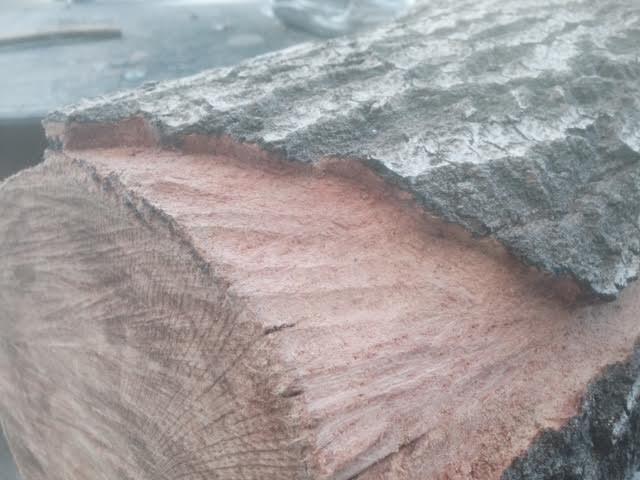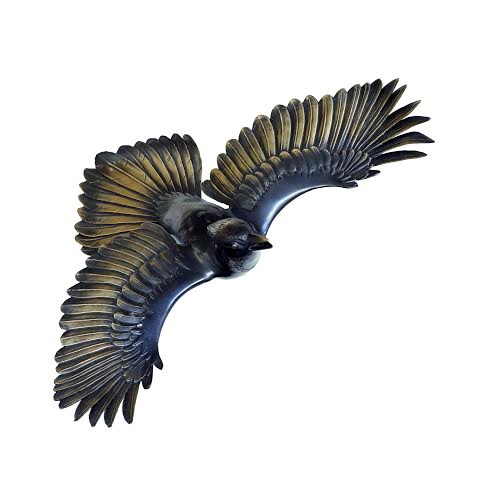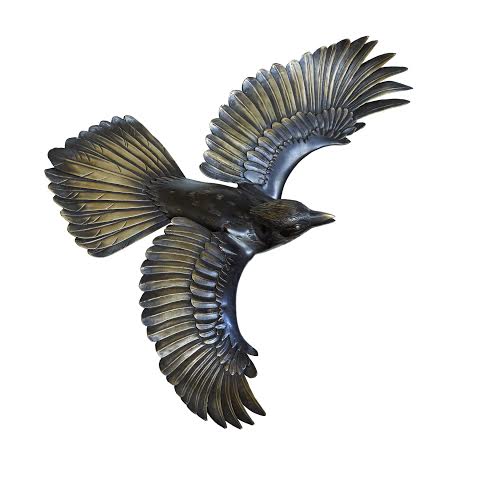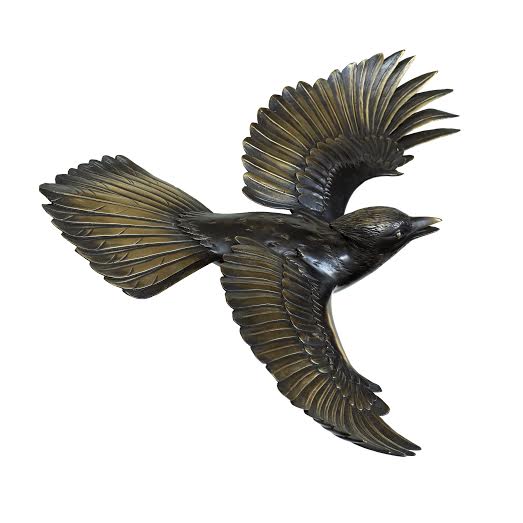We spent the days leading to 2024 in the quiet beauty of Paso Robles with a wonderful book by Virginia Atchley that documents the wonders of miniature Japanese art. Inspired by both we will this year be exploring how to create intricate details in sculpture using a variety of metals and possibly other mediums. Stay posted.
Katydid Sculpture Takes Shape
The Katydid, sometimes called a green bush cricket or long horned grasshopper is a family of insects with 8,000 species. In California we see both the greater and lesser angle-winged species which were reference points for Martin Pierce’s latest addition to his insect collection of sculptures. The actual shape of his new piece though owes more of it’s design to the Mediterranean species but even this variety was adapted for stylistic and practical reasons and made with wider wings.
For those interested in the name Katydid it comes from the Greek word “tettix” meaning small cicada. Wikipedia enlightened this writer to the onomatopoeic use of “ tettix” which when repeated makes a sound similar to one made by the Katydid when rubbing it’s wings together. Interestingly, the word Katydid is also onomatopoeic as when repeated “kat-y-did “imitates the stridulation of this insect.
When complete the Katydid will be considerably larger than other members of this species at a substantial 11” high by 16”long.
The progress photos shown here are provided courtesy of Maria Ramirez-Adams a fine art photographer and film maker.
Having decided on the shape of the katydid, Martin enlarged his sketch and drew it as a scaled profile on vellum. The profile was then redrawn on thicker paper but as 6 separate body parts.
The profiles were used as patterns and each body section was crudely cut from solid basswood. Once cut the sections were carved with a variety of wood cutting chisels.
The 2 wings were cut from 1/8” plywood and were soaked in water to make them supple so they be could be twisted and bent around the thorax. Once the correct shape was formed, the wings were clamped and glued at the narrow thorax end and will be used to create a complex 3 part mold. The 2 wings were carved as a unit with a protective brace to prevent their fragile form from breaking. The outer main leaf veins were first carved and then the smaller veins were drawn and carved.
An inspiration takes form as Martin works on a sculpture
We have mentioned numerous times on this blog of how inspired Martin is by beetles, moths, lizards and other creatures, along with their unique habitats. This is evident in many of the bespoke hardware designs found in our collections. One of the most fascinating creatures are beetles. We have studied many of them and even owned a pair of Hercules Beetles we fondly named Boris and Natasha. While they are no longer with us, they did provide Martin with a great deal of information as to their form and lifestyle and he has begun working on a one-of-a-kind sculpture partially inspired by the study of Boris and Natasha.
Martin is making a large sculpture of 2 fighting stag beetles. The concept came from a piece he did many years ago in England. He carved this piece out of ebony as this wood is close in color to the stag beetle and also, because at this point in our careers we had neither the money nor the audience to sell such art pieces cast in expensive bronze. It is our hope that there may now be an audience for a bronze sculpture such as this. The current sculpture is of 2 stag beetles in battle on a large piece of bark. One problem we have encountered was how to cast the bark. We thought we could actually use a nature made piece so we went in search of a suitable tree. We have an amazing Pepper tree in our front garden but could not use it without fear of damage. So we got in contact with our arborist ----- Victoria Monson and her husband Daryl of C.O. Arboritsts and they very kindly offered to keep us posted of any suitable trees they were felling. So when a large oak was marked for felling Martin drove to Pasadena and chose the best section of trunk to use as a pattern for the bark sculpture.
The photos follow the process of preparing the tree trunk, shaping it so that it could be used as the pattern for the bark sculpture. Normally Martin would actually sculpt his patterns from "thin air" as his creative imagination came to life in wax or wood. But since there is a lot of beautiful bark available he decided to manicure an actual tree trunk.
In order, these photos show how he chose the section and then chiseled it to essentailly form a trench. The next step was to make a barricade around the recessed trench by nailing strips of wood to form an outer wall and the last photo shows how the trough was filled with clay to make this area level.
The next step in the sculpting process will be preparing the mold...
To view our entire collection of architectural hardware or custom bronze sculptures, please visit our site at www.martinpierce.com.
Designers can visit the showroom located at:
5433 W. Washington Blvd.
Los Angeles, Ca 90016
323 939 5929
Bronze Jay sculpture reveal
Several months ago we introduced you to our jay sculpture in a three-part series that chronicled the process of designing, sculpting and casting a bronze piece, whether it be used as door hardware or as wall art. Our goal was to share with you how, after all the hard work, a collection of pieces like this

become a beautiful piece of sculpture like this soaring beauty:
This majestic piece measure 18" from wing tip to wing tip, 12" from beak to tail and projects 4" from the wall. The dark oil rubbed patina allows the exquisite detailing of the wings and body to be enjoyed. Part of a limited edition, this bird sculpture can be hung on the wall and admired as a piece of wall art or utilized as custom door hardware for an impressive entry to a residence, hotel or commercial building.
If you are interested in the jay sculpture or any of our custom hardware collections, please contact us to discuss your specific project. Our entire collection of architectural hardware can be viewed on our site at www.martinpierce.com.










